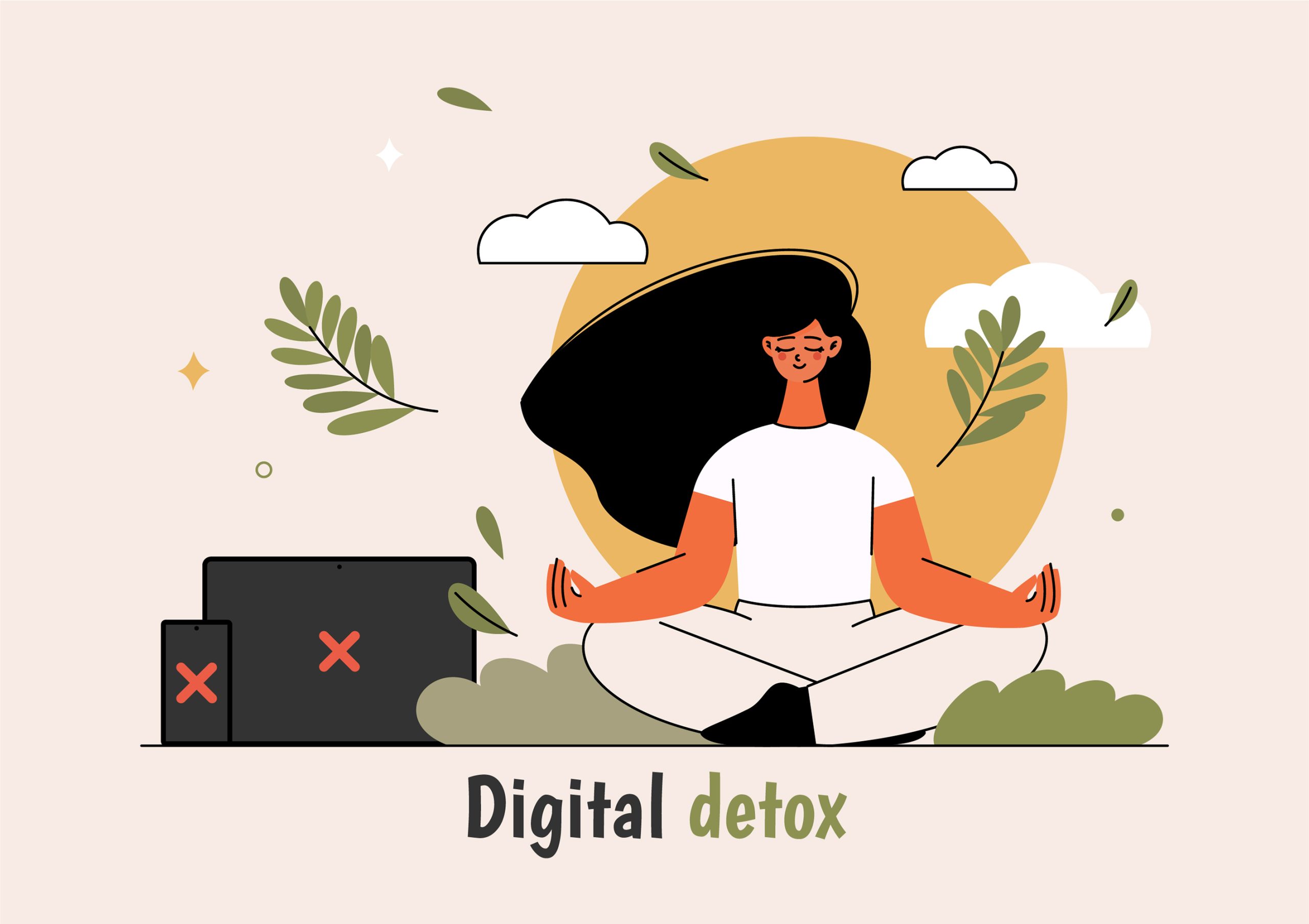Introduction
In today’s fast-paced digital world, it’s almost impossible to go a day without checking your phone, scrolling through social media, or responding to emails. While technology has made life more convenient, it has also increased mental clutter, stress, and anxiety. Digital overload can lead to decreased focus, poor sleep, and mood swings. A digital detox, however, offers a powerful solution to regain mental clarity and improve overall mood.
What is a Digital Detox?
A digital detox involves intentionally reducing or eliminating screen time from devices like smartphones, computers, tablets, and TVs. The goal is to disconnect from the constant digital noise and reconnect with the real world, yourself, and the people around you. This doesn’t mean giving up technology entirely but creating a balanced approach to its use.
Benefits of a Digital Detox on Mental Clarity
1. Reduces Information Overload
We are constantly bombarded with information from news articles, social media updates, emails, and notifications. Our brains struggle to process this constant stream, leading to mental fatigue and decreased cognitive performance. By taking a break from digital devices, you allow your brain to rest and prioritize important thoughts, improving focus and clarity.
2. Enhances Attention Span
Frequent use of digital devices, especially smartphones and social media, shortens attention spans. Notifications, alerts, and the temptation to multitask interrupt deep thinking and concentration. A digital detox allows your mind to engage in uninterrupted tasks, boosting your ability to focus and retain information effectively.
3. Boosts Creativity
Constant engagement with digital content often leaves little room for imagination and original thought. By stepping away from screens, your brain has the freedom to wander and explore new ideas. Many people report increased creativity, better problem-solving skills, and improved innovation after practicing regular digital detoxes.
4. Promotes Mindfulness
Mindfulness is the practice of being fully present in the moment, and it’s often disrupted by digital distractions. A digital detox encourages you to pay attention to your surroundings, emotions, and thoughts. This heightened awareness improves mental clarity and enables better decision-making in daily life.
Impact of Digital Detox on Mood
1. Reduces Stress and Anxiety
Continuous exposure to social media, emails, and news can trigger stress and anxiety. Comparing yourself to others online or feeling the pressure to respond immediately can negatively affect your mental well-being. Disconnecting from digital devices reduces these stressors, giving your mind a chance to relax and reset.
2. Improves Sleep Quality
Screen time before bed, especially blue light emitted by smartphones and laptops, interferes with your natural sleep cycle. Poor sleep affects mood, cognitive function, and overall health. Digital detox, particularly in the evening, promotes better sleep quality, resulting in improved mood and energy levels.
3. Enhances Emotional Resilience
Frequent engagement with digital content can overwhelm emotions, leading to irritability and mood swings. A digital detox provides space for self-reflection, relaxation, and emotional processing. Over time, this strengthens emotional resilience and the ability to cope with daily challenges effectively.
4. Encourages Real-Life Connections
Spending less time online frees up time for face-to-face interactions with family, friends, and colleagues. Real-life connections are essential for emotional well-being and can significantly boost mood. Engaging in conversations, shared activities, and quality time strengthens bonds and promotes happiness.
Practical Steps for a Successful Digital Detox
1. Set Clear Goals
Before starting a digital detox, define what you want to achieve. Is it better focus, improved sleep, reduced anxiety, or more real-world interactions? Having a clear purpose will keep you motivated and committed throughout the detox period.
2. Start Small
If the idea of completely disconnecting is overwhelming, begin with short, manageable periods. For example, start with an hour without devices daily and gradually increase the duration. This approach makes the process sustainable and less stressful.
3. Remove Unnecessary Notifications
Notifications are a constant source of distraction. Disable non-essential alerts from social media apps, emails, and games. This reduces the urge to check your phone repeatedly and creates a calmer digital environment.
4. Create Tech-Free Zones
Designate certain areas of your home or workspace as tech-free zones. For instance, avoid using devices in the bedroom, dining area, or during family time. These boundaries help you focus on real-life experiences and improve mental clarity.
5. Engage in Offline Activities
Replace screen time with activities that stimulate the mind and body. Reading books, exercising, practicing mindfulness, journaling, or spending time outdoors can improve mental clarity and boost mood. Offline hobbies help break the cycle of digital dependency.
6. Schedule Regular Detox Periods
Consistency is key to achieving lasting benefits. Schedule daily, weekly, or monthly digital detox sessions. Over time, your brain adapts to lower stimulation, reducing anxiety, improving focus, and enhancing overall well-being.
Common Challenges During Digital Detox
1. Fear of Missing Out (FOMO)
Many people experience anxiety when disconnected from social media or news. This fear is natural but temporary. Remind yourself that taking a break improves mental health and clarity, and reconnecting after the detox is always possible.
2. Habitual Checking
Checking phones or devices out of habit can be difficult to control. Create a structured schedule and gradually reduce unnecessary usage. Mindfulness techniques can help you resist the urge to check devices impulsively.
3. Social Pressure
Friends, family, or colleagues may expect immediate responses to messages and notifications. Communicate your digital detox goals clearly and set boundaries to manage expectations while maintaining relationships.
Conclusion
Digital detox is more than a trend; it’s a necessary practice in a world dominated by screens. By taking intentional breaks from technology, you can reduce stress, improve mental clarity, boost mood, and strengthen real-life connections. Whether it’s a few hours daily or a weekend retreat, disconnecting from digital devices allows your mind to rest, recharge, and thrive. Incorporating digital detox into your routine can lead to long-term benefits for your mental health and overall quality of life.
Takeaway
- Digital detox reduces information overload and mental fatigue.
- Improves attention span, creativity, and mindfulness.
- Enhances emotional well-being, reduces stress, and improves sleep quality.
- Encourages real-world connections and healthier habits.
- Starting small, setting boundaries, and engaging in offline activities make detox manageable.



